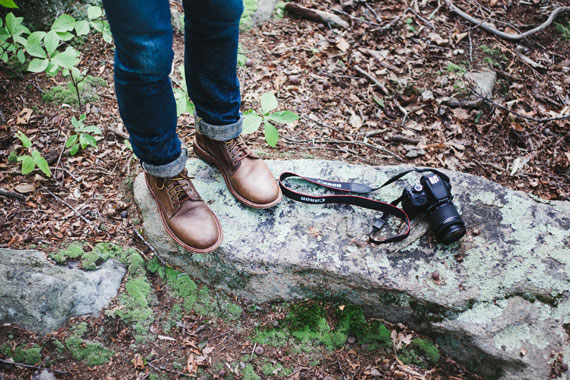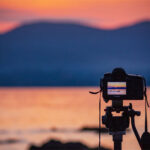In the world of photography, capturing the perfect shot often depends on the stability of your camera. While tripods are the go-to solution for most, there are occasions when they might not be at hand, or they may be impractical due to location or circumstance. Fortunately, a few techniques can help you ensure a steady shot, even without the trusty tripod. Here are some handy camera stabilization tricks for those tripod-less moments:

Photo captured by James Fitzgerald
Body Brace:
- Use your own body as a stabilizer. Lean against a wall or tree, ensuring as many points of your body (shoulders, hips, and feet) are making contact.
- Hold your breath just before you press the shutter to reduce movement further.
Elbow Anchor:
- Tuck your elbows into your body, using your chest as a makeshift tripod. This provides three points of contact (both elbows and your hands) for maximum stability.
The Ground Technique:
- Lay down flat on the ground and use your arms to stabilize the camera. This provides more surface area for stability and can be especially useful for capturing low angle shots.
Use A Bean Bag:
- A small bean bag can be a handy alternative to a tripod. Rest your camera on it, and it can mold to the shape of the camera, providing a stable base. It’s also lightweight and easily portable.
Camera Straps:
- Extend your camera strap fully and pull it tight against the back of your neck while holding the camera. The tension can act as a stabilizer, reducing shake.
Steady Surfaces:
- Use any available steady surface such as tables, ledges, or railings. If your camera has a timer, you can also set it on these surfaces, start the timer, and step back to avoid introducing shake.
The String Tripod:
- Cut a piece of string about twice the height of yourself.
- Tie each end of the string to the two sides of a flat washer.
- Step on the washer with the string taut and bring the camera up to eye level, adjusting tension in the string to stabilize the camera.
Increase Shutter Speed:
- If you’re shooting in manual mode, increase your shutter speed. Faster shutter speeds reduce the chance of motion blur. Just be mindful of the exposure triangle – you might need to adjust ISO or aperture accordingly.
Optical & Digital Stabilization:
- Many modern cameras and lenses come with built-in stabilization systems. If yours has this feature, make sure it’s activated.
Continuous Shooting:
- Use the burst or continuous shooting mode. Taking multiple shots in quick succession increases the chance that at least one of them will be sharp.
Lens Choice:
- Wider lenses are generally easier to hold steady compared to telephoto lenses. If possible, choose a lens with a shorter focal length for hand-held shots.
Post-Processing:
- While it’s always best to get the shot right in-camera, software like Adobe Lightroom or Photoshop offers shake reduction tools that can help sharpen slightly blurry images.
In the end, the essence of photography lies in the balance between equipment, skill, and creativity. While tripods are incredibly useful, there are numerous ways to ensure your camera is stable for that perfect shot. Embrace the challenges and think outside the box; sometimes, the limitations can lead to the most inventive solutions.
For More Tips & Tricks, Summer Sale Ending Soon:
This #1 bestseller is the most in-depth eBook on how to capture amazing photography anywhere. Over 250 pages of photography tips & tricks from industry insiders. Currently 83% off which ends soon for a Summer Sale if you want to check it out.

How to do Star Trail Photography
It is the product of over a DECADE of research as an insider in the photography industry, assembled to help you learn quickly and avoid the mistakes that I made along the way.
Deal ending soon: The Photography Tutorial eBook Summer Sale
Like This Article?
Don't Miss The Next One!
Join over 100,000 photographers of all experience levels who receive our free photography tips and articles to stay current:






Leave a Reply